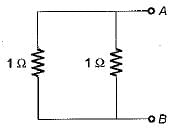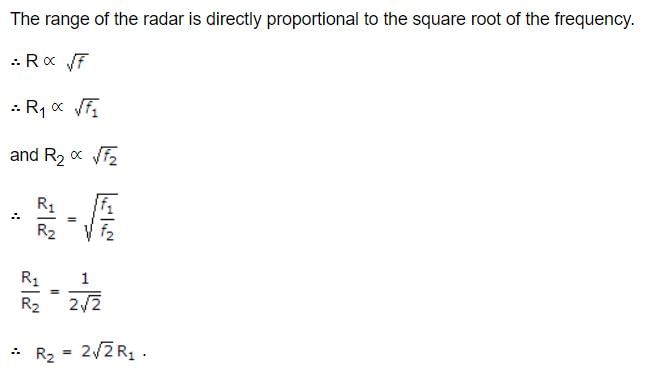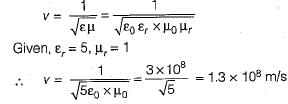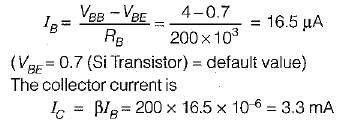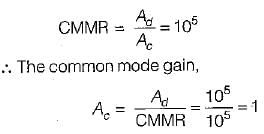Practice Test: Electronics Engineering (ECE)- 11 - Electronics and Communication Engineering (ECE) MCQ
30 Questions MCQ Test - Practice Test: Electronics Engineering (ECE)- 11
Statement: All bags are cakes. All lamps are cakes.
Conclusions:
I. Some lamps are bags.
II. No lamp is bag.
Deduce which of the above conclusion logically follows statements:
Conclusions:
I. Some lamps are bags.
II. No lamp is bag.
Deduce which of the above conclusion logically follows statements:
Man does not live by __________ alone.
Extreme focus on syllabus and studying for tests has become such a dominant concern of Indian students that they close their minds to anything ___________ to the requirements of the exam.
Select the pair that best expresses a relationship similar to that expressed in the pair:
LIGHT : BLIND
In an exam, the average was found to be 50 marks. After deducting computational errors the marks of the 100 candidates had to be changed from 90 to 60 each and average came down to 45 marks. Total number of candidates who took the exam was:
A solid 4cm cube of wood is coated with red paint on all the six sides. Then the cube is cut into smaller 1cm cubes. How many of these 1cm cubes have no colour on any side?
One of the warmest winters on record has put consumers in the mood to spend money.Spending is to be the strongest in thirteen years. During the month of February, sales of existing single family homes hit an annual record rate of 4.75 million. This paragraph best supports the statement that:
The age of father is 4 times more than the age of his son Amit. After 8 years, he would be 3 times older than Amit. After further 8 years, how many times will he be older than Amit?
Pipe A, B and C are kept open and together fill a tank in t minutes. Pipe A is kept open throughout, pipe B is kept open for the first 10 minutes and then closed. Two minutes after pipe B is closed, pipe C is opened and is kept open till the tank is full. Each pipe fills an equal share of the tank. Furthermore, it is known that if pipe A and B are kept open continuously, the tank would be filled completely in t minutes. Find t.
The Thevenin's equivalent resistance to the left of AB in figure given below is given by:
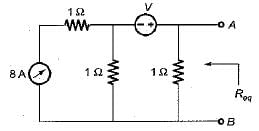
What is the time period of the sinusoidal signal
x(n) = 10 cos(0.4n)
In a radar system, the range of R1 is achieved at a frequency f1. Then the range R2 at frequency R2 = 8f1 would be __________ [Neglect effect of 1 on the Beam width.]
Gate function is defined as ______________
A signal m(t) = 5 cos(2π100t) is frequency modulated a carrier. The resulting FM signal is:
The approximate bandwidth of the FM signal would be:
A system has a receiver noise resistance of It connected to an antenna with an input resistance of
The noise figure of the system is:
A phase lead compensating network has its transfer function The maximum phase lead occurs at a frequency of:
The time taken for the output to settle within 2% of step input for the control system represented by is given by:
If diameter of a circular cross-sectional antenna is 2m, and it is transmitted a signal at frequency 100MHz, determine the minimum distance for far field approximation.
A load impedance is to be matched to a
lossless transmission line by using a quarter wave line transformer. The characteristics impedance of the quarter wave transformer.
What is the velocity of a plane wave in a lossless medium having a relative permittivity of 5 and relative permeability of unity?
A dipole antenna of/2 length has an equivalent total loss resistance is 0.5
. The efficiency of antenna is:
If an electrical system is compared to a fluid system, the electrical current corresponds to the:
For the circuit shown below, the collector to emitter voltage is:
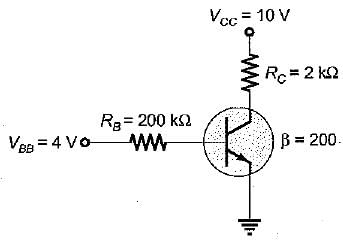
A power supply has a full load voltage of 24V. What is its no-load voltage for 5% regulation?
Two 100 W, 220 V bulbs are required to be connected across a 400 volts supply. The value of resistance to be inserted in the line so that the voltage across the bulbs does not exceed 220 V is:
For a given op-amp, CMMR = 105 and differential gain Ad = 105. The common-mode gain of the op-amp is:
The system of linear equations:
3x + 4y = 6
2x + 3y = 5
has:
Which of the following is a solution to the differential equation ?
The value of the integral dz is: (where C is the circle z = 1)



